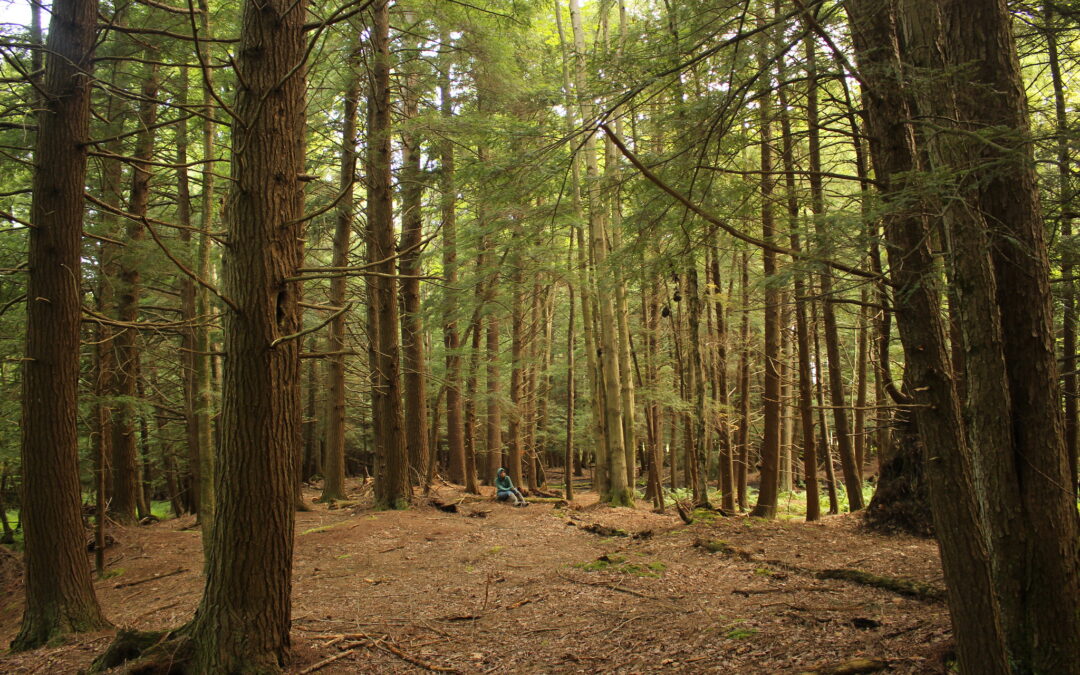By Sarah Hatfield
Mid-summer is typically the time of year that my family reunion occurs, and we come from Texas and Massachusetts and Virginia and closer to settle into Venango County for the weekend. It is where the now-elders grew up and where the childhoods of the cousins were bonded together. Their stories intertwine with ours now, and the next generation is woven in more deeply every year.
While the stories don’t change, much else does. Even the drive down, watching the landscape, and noticing where trees are gone or where they have grown up, new fields that are plowed or old ones returning to wildflowers, I am reminded that change is the most reliable force. Not just seasonal, because this trip is reliably summer, but years and decades bring changes that are sometimes predictable and sometimes not.
Logging a forest is a sudden change, and the regeneration after follows a pattern that most foresters and outdoors folks recognize. The sunlight filters through, more plants start growing on the forest floor. Some of the edge trees succumb to wind that is full strength without neighbors. The blackberries arrive, as do birds and mammals that thrive on change and sometimes marginal habitats. Now the blackberries hover on the edge, all but crowded out.

At my aunt’s and uncle’s house, the creek is always a highlight, and we have been making treks down there for years. The large rock we used to have to wade out to is bordered by grass now, and I don’t even need water shoes to get to it. I haven’t found a salamander in years, though I’m sure they are still there. Vegetation covers the rocks that I know are still there, and while the creek follows the same valley, its path is different than it was ten years ago, or even five.
On the way back, we stopped at Oil Creek State Park and read some of the signs about Petroleum Center and the oil industry that carpeted that area 150 years ago. In looking at some of the photos, there wasn’t a tree to be seen. Standing in the same place, looking at the same scene today, it is hard to believe that all the forest we were seeing was once oil-soaked, barren mud, devoid of all plant life.
The adage that ‘nature is resilient’ is accurate; in most cases, the natural world has the ability to reclaim just about anything, or at least hide it. I think it is important to remember, that even though the forest ‘comes back’, it is changed in fundamental ways. Someone well versed in reading historic landscapes could look at the forest and tell me where old roads were, point out old foundations, or follow a century-old swale.
Below the soil, there will be an oil-soaked layer that serves as a record of land use. There may be wooden, corduroy roads buried beneath two feet of soil. Certainly, there are iron pieces and parts leftover from one of the most influential industries ever to touch that part of the state.
The point is that the landscape changes, sometimes by natural process and sometimes forced by human hands. And it isn’t always ‘permanent’ change, but in other ways it is. A downed tree will change the course of a creek, and while it may return to the original channel, it isn’t the same. But it is still a creek, beautiful, supporting life, and providing a welcome respite from the world.
The stories of landscapes are interwoven with those that live near or within them. Be that wildlife, plants, creek bottoms, boulders, cliffs, or humans. And just as those landscapes change, so do the residents. Standing in the creek at my relative’s home, I have changed. The reunion has changed. And our change parallels that of the creek — permanent, different, but still beautiful and supporting life.
I am always recharged by this visit into the legacy and tradition of my family. This year it was especially cherished, and I am grateful for all the times I’ve made that trip, all the changes I’ve witnessed, and all that we are all becoming.
Sarah Hatfield is the Education Coordinator at ACNC.
Audubon Community Nature Center builds and nurtures connections between people and nature. ACNC is located just east of Route 62 between Warren and Jamestown. The trails and outdoor facilities are open from dawn to dusk. The Nature Center is open from 10 a.m. until 4:30 p.m. daily except Sunday when it opens at 1 p.m. More information can be found online at auduboncnc.org or by calling (716) 569-2345.


Recent Comments